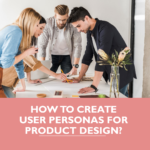How to design products for the Internet of Things (IoT)?
The Internet of Things (IoT) is a network of physical objects that are embedded with sensors, software, and other technologies for the purpose of connecting and exchanging data with other devices and systems over the internet. IoT products can range from simple devices, such as smart thermostats and light bulbs, to complex systems, such as self-driving cars and smart factories.
Designing products for the IoT is different from designing traditional products in a number of ways. First, IoT products must be able to connect to the internet and communicate with other devices. Second, IoT products must be secure and protect user data. Third, IoT products must be energy-efficient and have a long battery life.
Here are some tips for designing products for the IoT:
- Start with the user in mind: What are the user’s needs and pain points? How can the IoT product help the user to solve their problems or achieve their goals?
- Choose the right hardware and software: There are a variety of IoT hardware and software platforms available. Choose the platforms that are right for your product and that will meet the needs of your users.
- Design for security: IoT products must be secure and protect user data. Use encryption and other security measures to protect your product from unauthorized access and attacks.
- Design for energy efficiency: IoT products must be energy-efficient and have a long battery life. Use low-power hardware and software components, and design your product to minimize power consumption.
- Test your product thoroughly: Before releasing your IoT product to the market, test it thoroughly to ensure that it is secure, reliable, and easy to use.
Here are some examples of IoT products:
- Smart home devices: Smart home devices, such as smart thermostats, light bulbs, and door locks, can be controlled remotely using a smartphone or tablet.
- Wearable devices: Wearable devices, such as smartwatches and fitness trackers, can collect data about the user’s health and activity.
- Industrial IoT devices: Industrial IoT devices, such as sensors and actuators, can be used to monitor and control industrial processes.
Benefits of designing products for the IoT
There are a number of benefits to designing products for the IoT, including:
- Increased convenience: IoT products can make people’s lives more convenient by automating tasks and providing real-time information.
- Improved efficiency: IoT products can help businesses to improve efficiency by automating processes and collecting data to optimize operations.
- New opportunities: IoT products can create new opportunities for businesses and individuals. For example, IoT data can be used to develop new products and services, and to improve existing products and services.
Challenges of designing products for the IoT
There are also a number of challenges to designing products for the IoT, including:
- Security: IoT products must be secure and protect user data. This can be a challenge, as IoT devices are often exposed to the internet and are vulnerable to attack.
- Energy efficiency: IoT products must be energy-efficient and have a long battery life. This can be a challenge, as IoT devices are often running continuously.
- Complexity: IoT systems can be complex, and designing and managing them can be challenging.
Despite the challenges, designing products for the IoT can be a rewarding experience. IoT products can make people’s lives better and create new opportunities for businesses and individuals.
Here are some additional tips for designing products for the IoT:
- Design for scalability: IoT systems can grow quickly, so it is important to design your product to be scalable. This means that the product should be able to handle a large number of devices and users.
- Design for flexibility: IoT systems can be used in a variety of different ways, so it is important to design your product to be flexible. This means that the product should be able to be adapted to different needs and requirements.
- Design for interoperability: IoT products should be able to interoperate with other IoT products and systems. This means that the product should be able to communicate with and exchange data with other products and systems.
By following these tips, you can design products for the IoT that are secure, energy-efficient, scalable, flexible, and interoperable.








